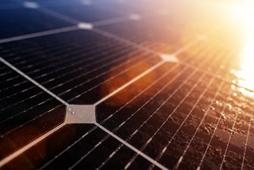How Does An Off Grid Solar System Work?
With energy prices soaring and the genuine possibility that they may continue to do so long term, many people are looking at meeting their energy demands off-grid with the power of renewable energy. Off-grid solar systems allow people to power their homes without relying on the national grid and therefore aren’t held hostage to the wild inflation of on-grid energy costs. Types Of Solar Power Systems Solar panels are now a very familiar sight on British roofs. The majority of these solar panels are connected to the National Grid. This means that the energy generated by these on-grid solar systems is fed back into the grid reducing energy used and therefore the energy bill. Additionally, being connected to the grid means that in winter months when the number of overcast days is at a maximum, and therefore the solar system is not generating as much energy, there is no loss of power; the national grid just takes over. Off-grid solar systems are entirely powered by solar. This means that a battery is required to store the energy and to be used at night and when it is overcast. However, even those with enormous battery capacity generally have a backup in place; such as a generator. Components Of An Off-Grid Solar System The following are the essential off-grid solar power accessories. Solar Panels These are the most commonly thought of components of a solar system. Made up of a large number of photovoltaic cells (PV cells), they convert the energy from sunlight into direct current (DC) electricity. Solar panels are connected to each other with cables and then either to the switchboard, a battery or more commonly to a solar inverter. Solar Inverter The solar inverter converts the DC electricity generated by the solar panels into alternating current (AC) electricity. AC electricity is the electricity that we can use in our homes. Batteries Essential for the storage of electricity in off-grid systems, the batteries used in solar systems are mostly either: Lead-Acid – capacity is measured in Amp Hours (AH). Lithium-Ion – capacity is measured in Kilowatt hours (KwH). Off-grid systems should be able to store enough energy for, at the very least, a few days and ideally a couple of weeks. Electricity Switchboard These are only required in on-grid solar systems as they are used to feed the generated electricity into the grid. Less commonly in the UK, they are used to power particular appliances in the house and any excess required is automatically taken from the grid. How An Off-Grid Solar Power System Works The energy from sunlight is transferred into DC electricity by the PV cells in solar panels. The solar panels are connected with cables to an inverter. The inverter changes the DC current into AC current. The AC electricity is stored in batteries ready to power appliances within the home. What’s Next? Are you ready to browse or buy your off-grid solar system and say goodbye to rocketing energy bills for good? Then head over to our online store, take advantage of our sale, or get in touch to talk to one of our experts here at Generator Pro today.
Visit the Generator-Pro website for more information on How Does An Off Grid Solar System Work?






